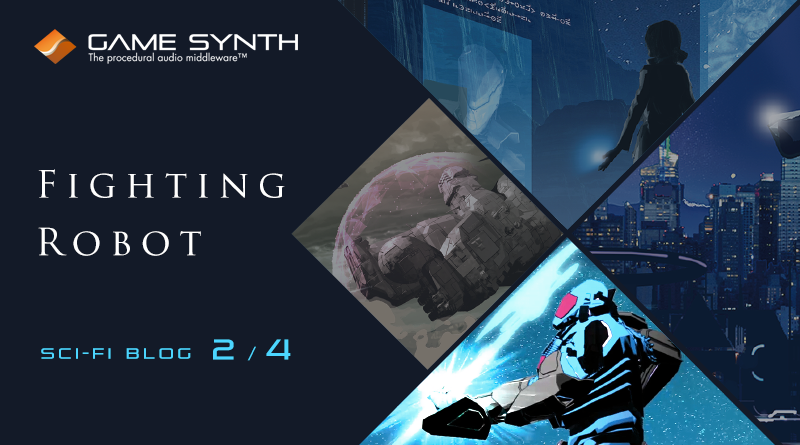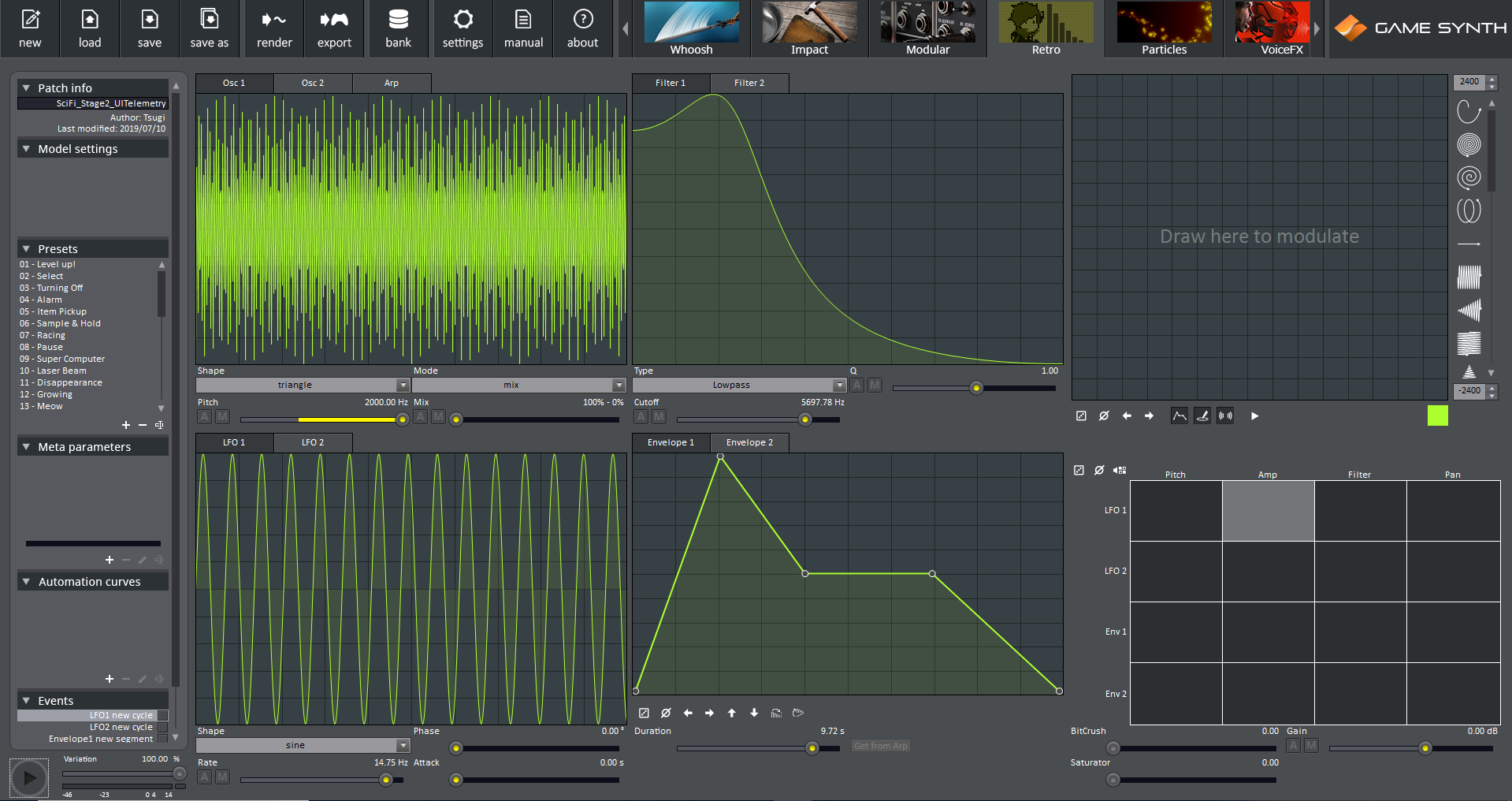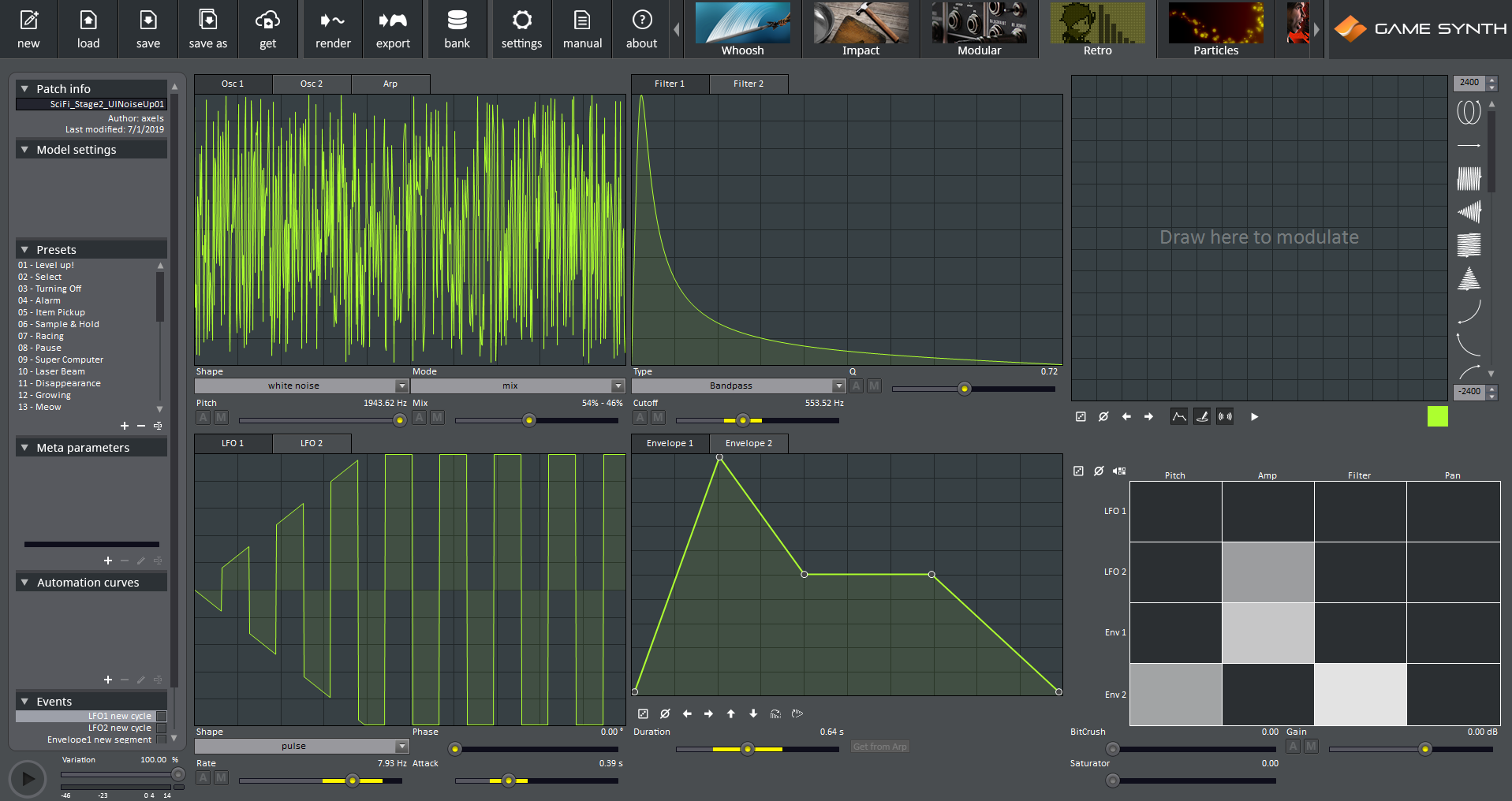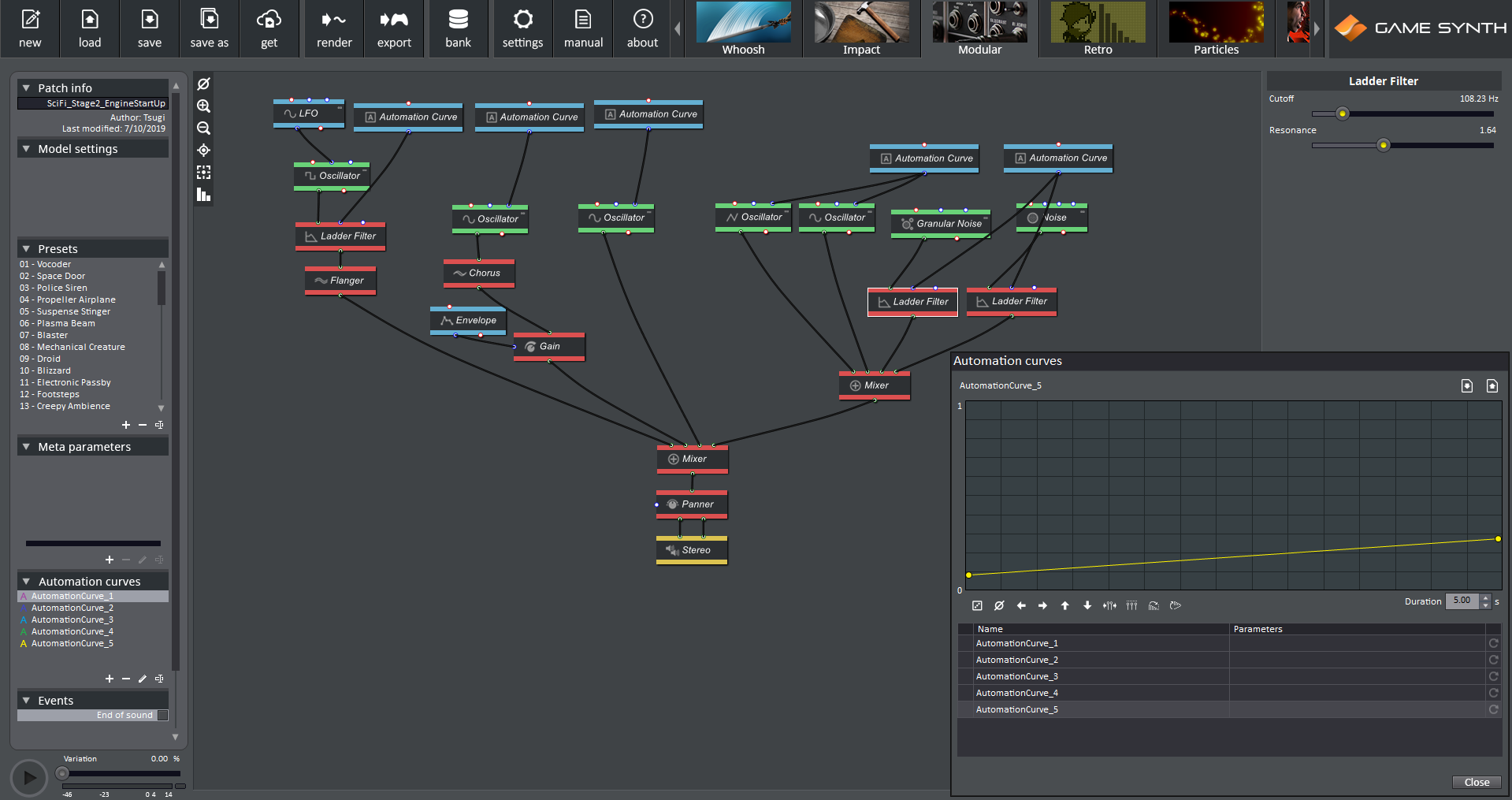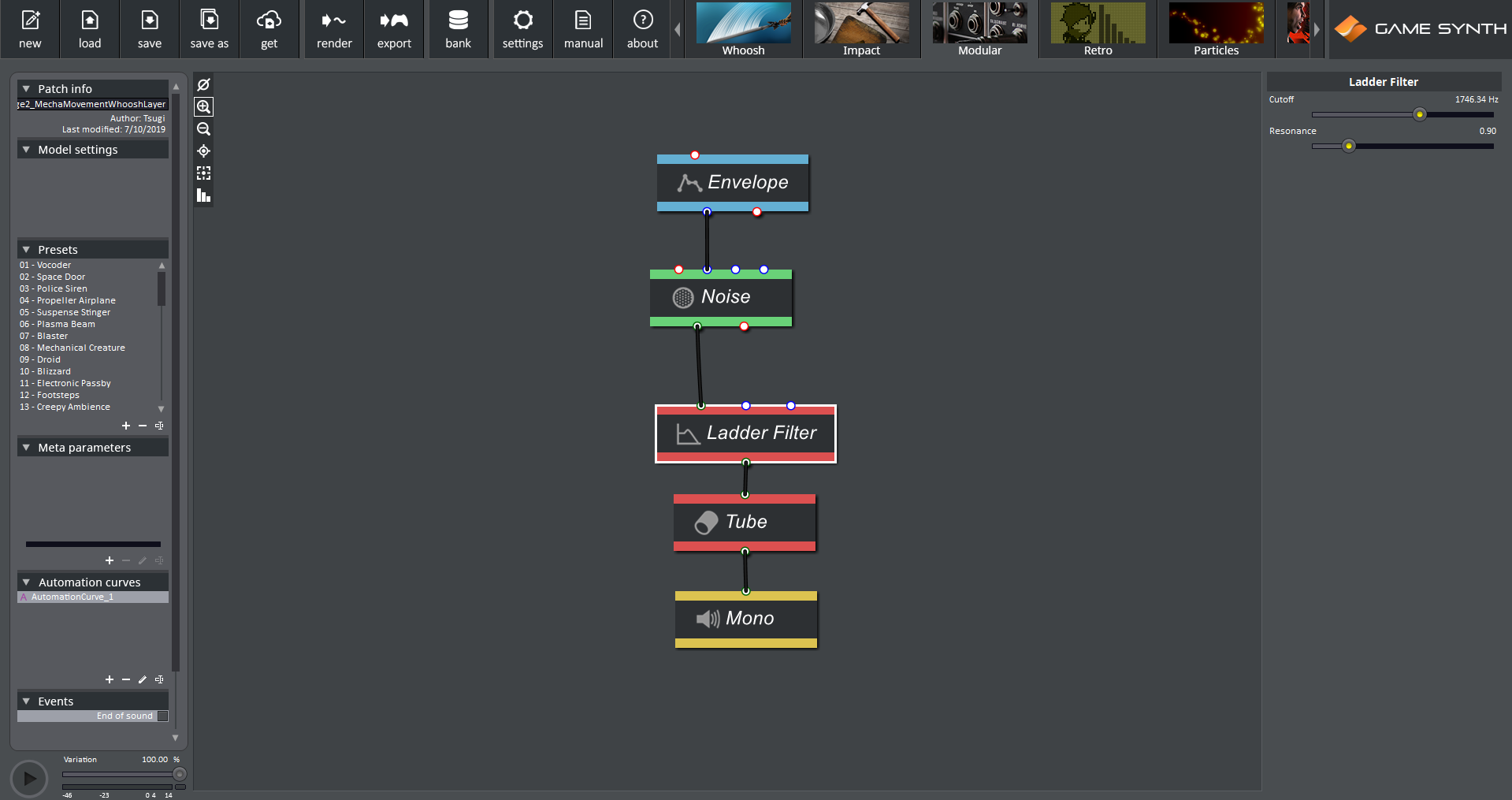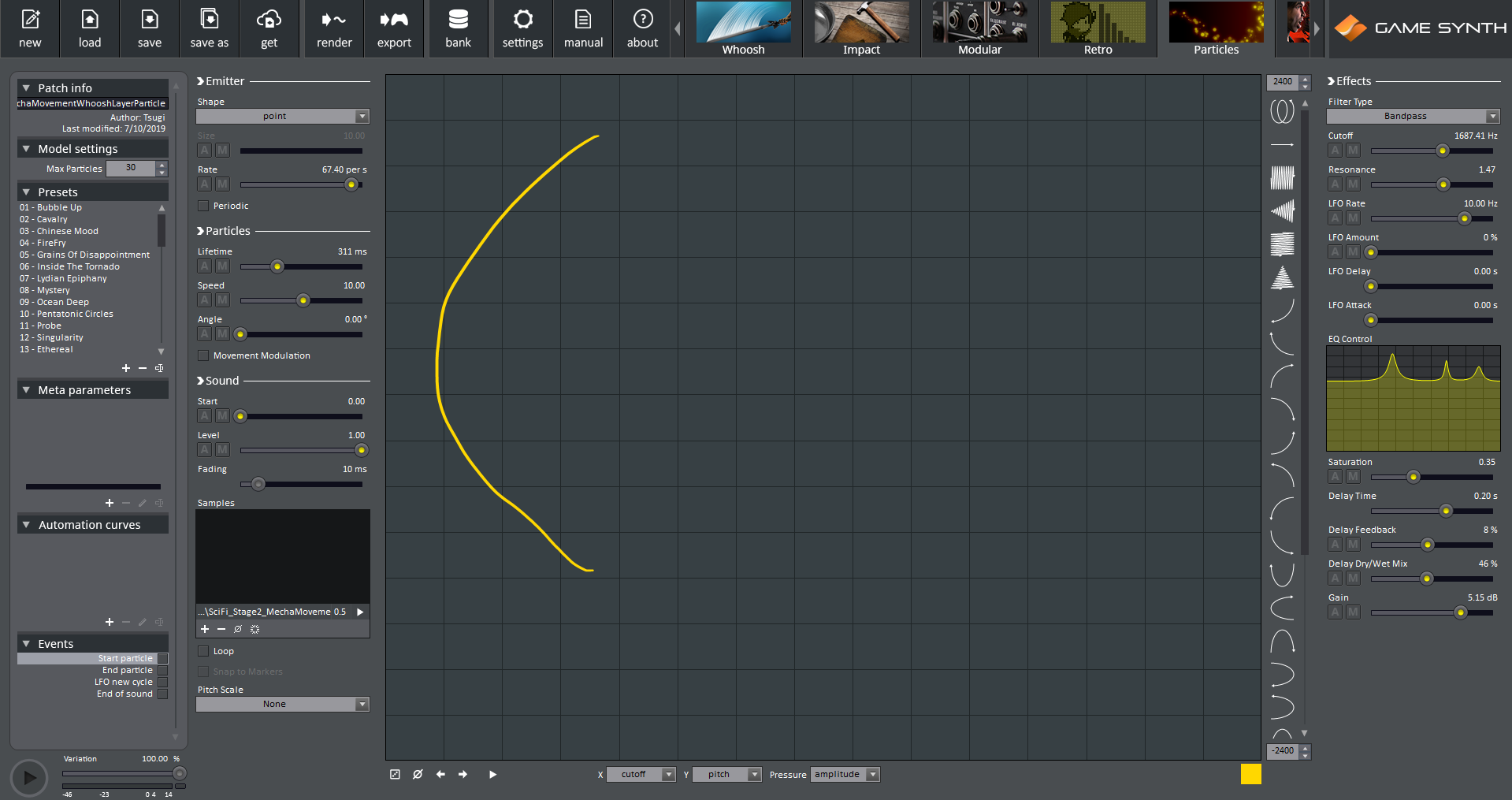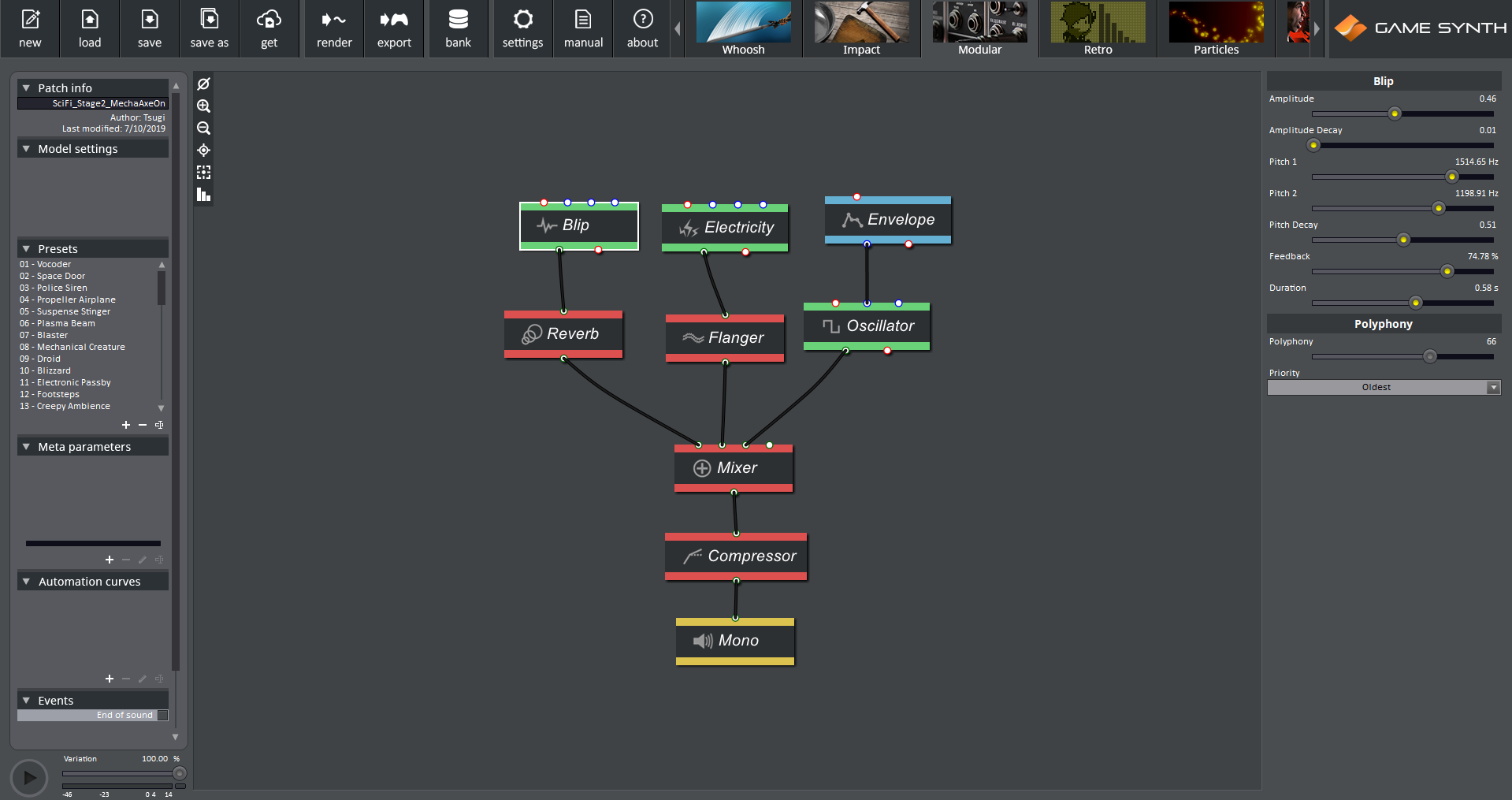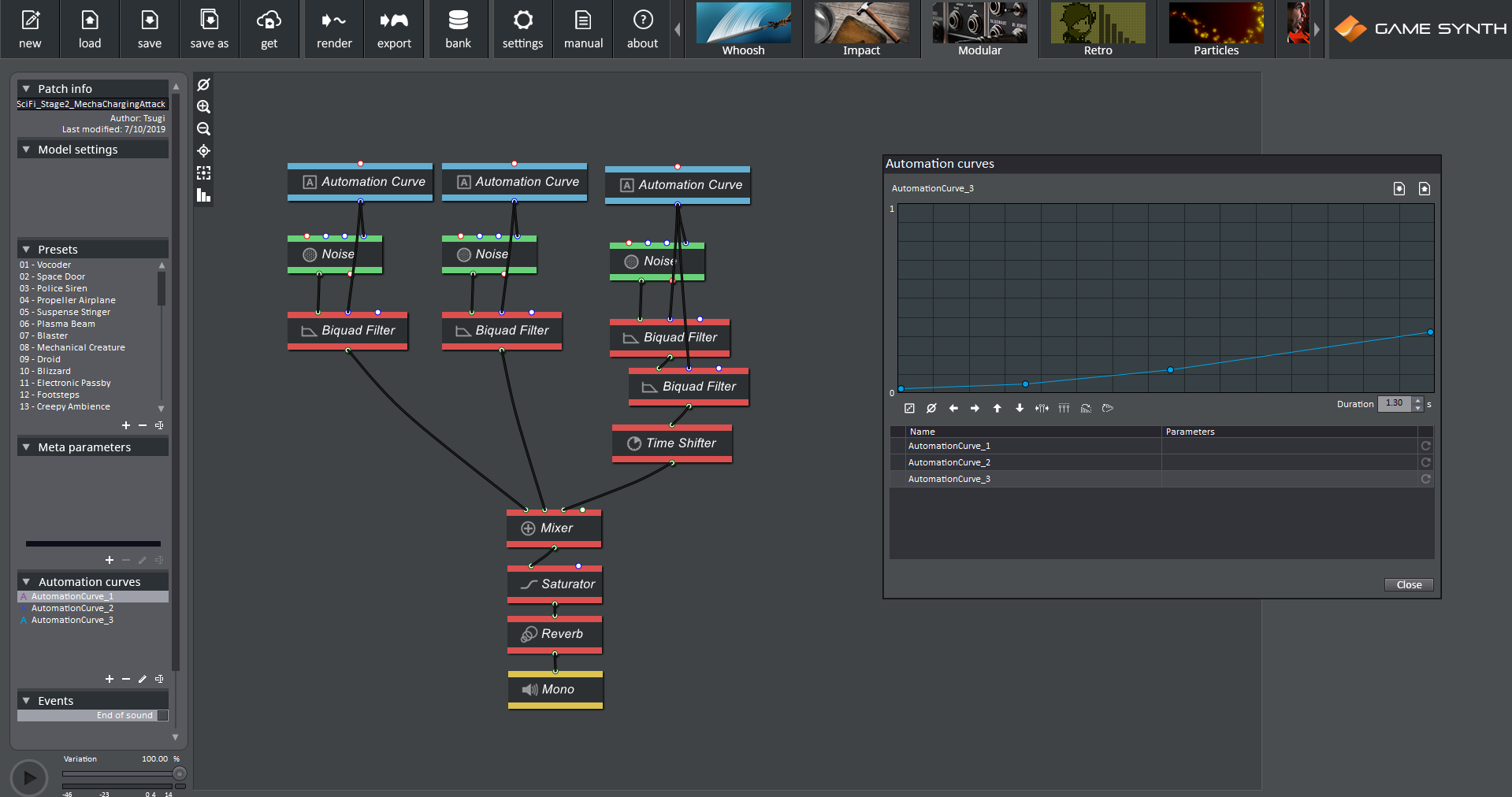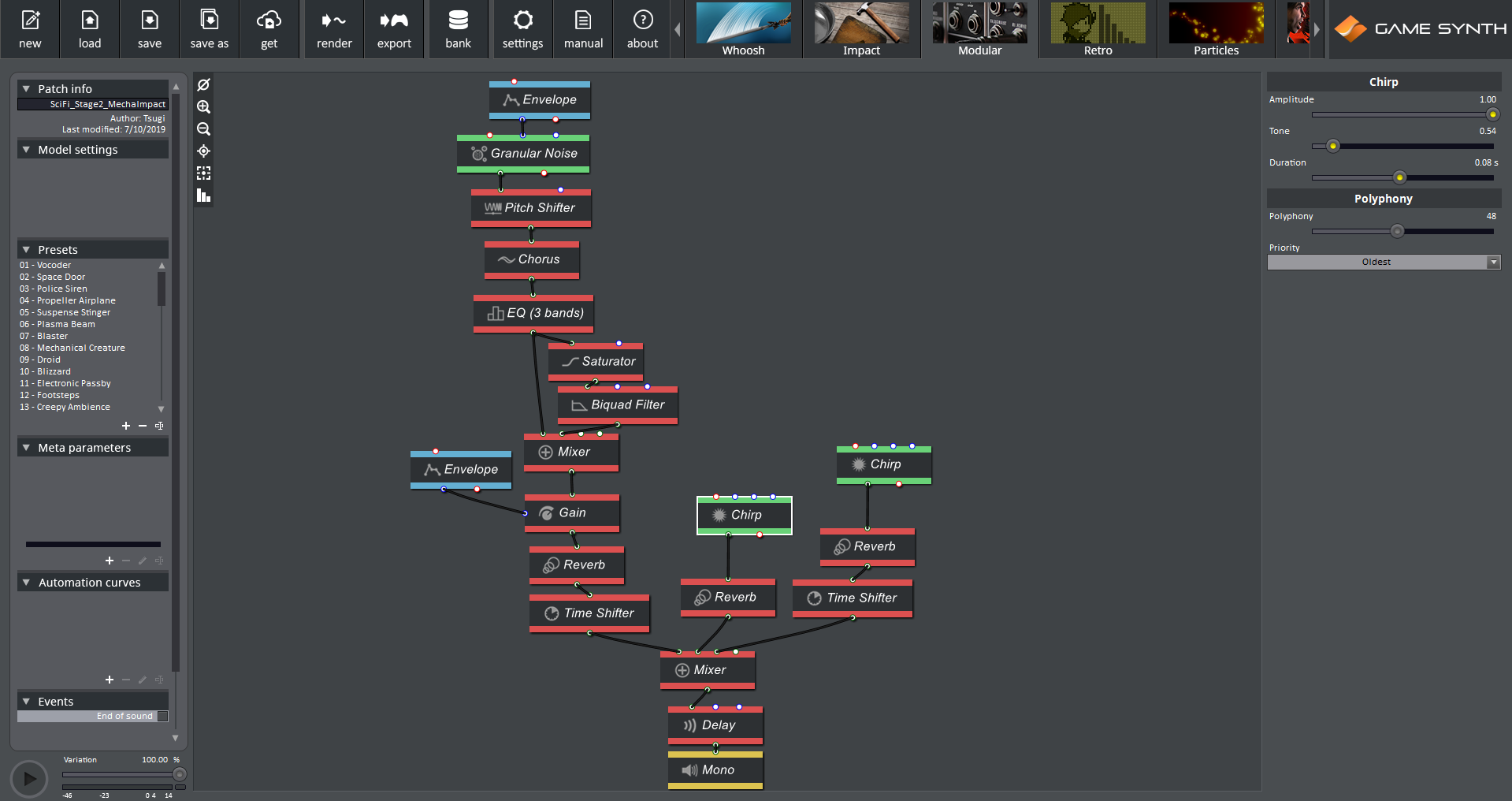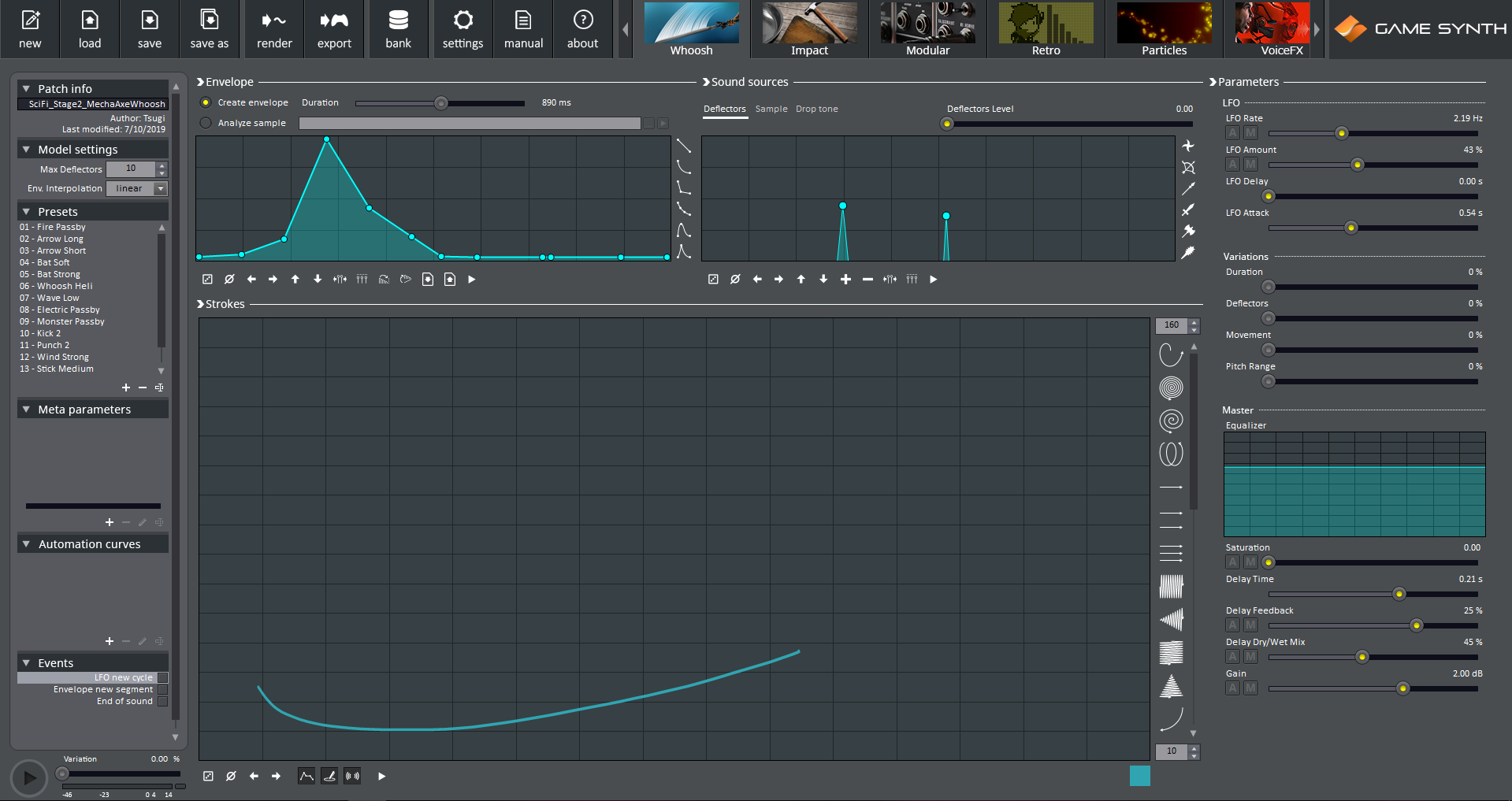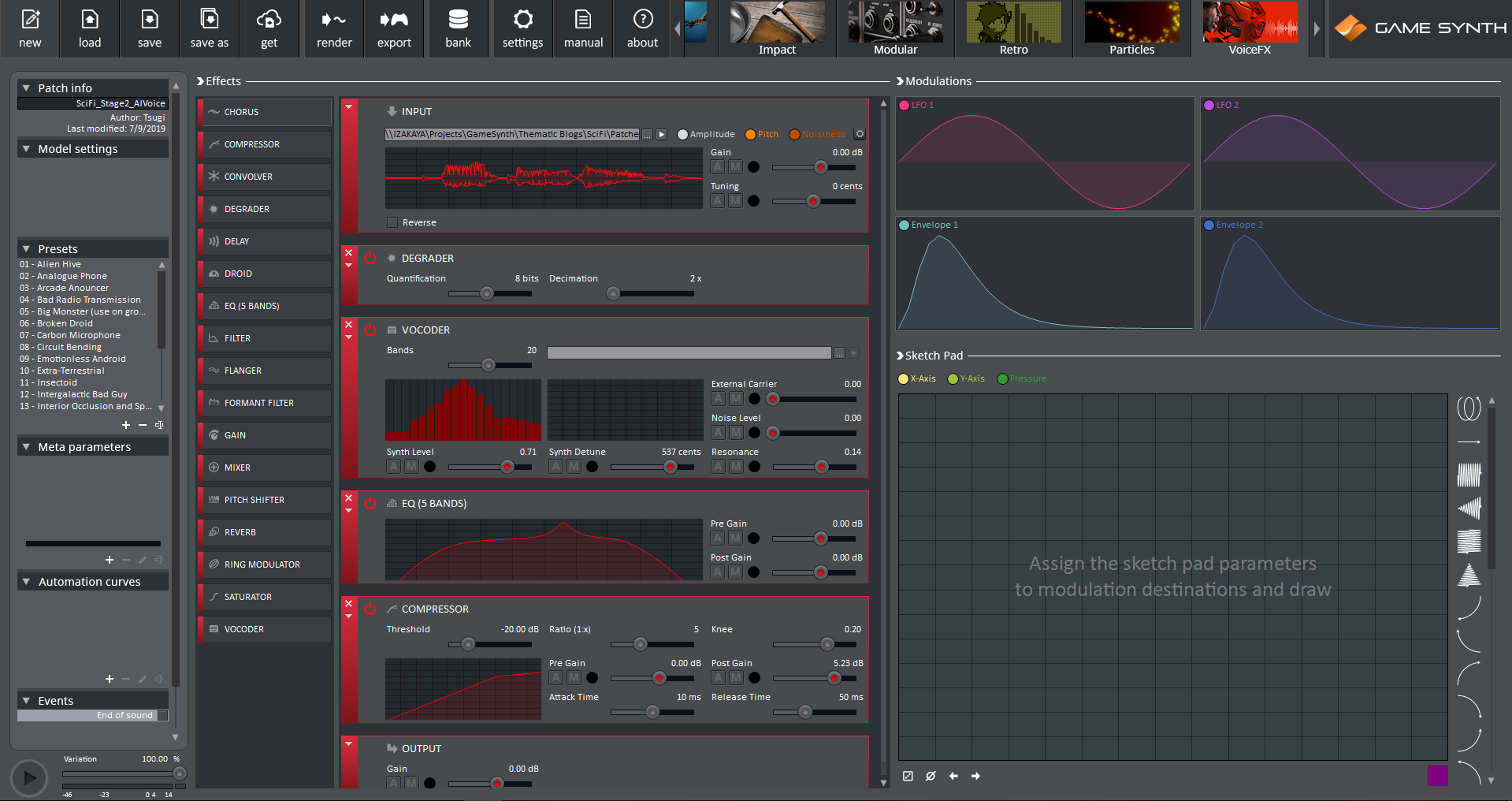Introduction
This is the second post in our series devoted to the sound design of effects for sci-fi games and animations, all procedurally, all in GameSynth! Our previous post focused on the creation of a futuristic city ambience. It is now time for giant robots and blipping user interfaces, with a mecha that would not be out place in the Gundam universe. This will be the perfect opportunity to put many of the GameSynth models to contribution, from Retro, Whoosh and Modular to Particles and VoiceFX. But first, let’s check our animation!
Bleeps and blops

The scene starts inside a mecha’s cockpit, which is the ideal setting to explore the creation of UI sound effects. The Retro model is the weapon of choice to create bleeps and blops in GameSynth (although the Modular comes a close second with modules such as Blip, Chirp, and its multiple oscillators and LFOs).
We first created a patch with a lot of pitch movement, both by drawing on the SketchPad and by modulating the pitch with a LFO (Sample & Hold type).
We also added random ranges to the main parameters and, thanks to GameSynth ability to quickly generate random sound variations, we were able to render many sounds at once, some of them a bit reminiscent of R2D2! Still in GameSynth, we automatically exported the sound to Reaper, at which point we selected the most appropriate while checking with the animation.
For the sound of the small UI elements on the console at the bottom, we designed a couple of tonal bleeps. For example, we used the arpeggiator of the Retro model with only 2 steps to create a “selection” sound.
Finally, the telemetry sound effect, which consists of a quick succession of beeps, was also created in the Retro model using a simple amplitude modulation.
Using a particle system to design noise sweeps
However, the first noise-based effect you hear in the cockpit is a combination of Modular and Particles patches. We first generated a noise signal in the Modular model that we then used as a sound source in the Particles model.
This allows us to draw noise sweeps very accurately while modulating up to three parameters in real-time from the sketch pad (for the x-axis, y-axis, and pressure). The Particles Model is a great choice for this as it offers many modulation destinations such as amplitude, pitch, pan, particles emission rate and lifetime, filter cutoff and resonance, position in sample, delay etc. This particular sound is quite simple, so we just modulate the pan in X, the cutoff in Y and control the amplitude through the pressure.
Of course, we could add many more samples for the sound sources and play with the LFO, saturation, EQ etc. to generate a large palette of noise sweeps very easily.
Mecha on the move

Both inside and outside of the mecha’s cockpit, we can hear its engine, first rising during startup and then quietly humming. A single patch was built in the Modular model for this. To get a rich but tonal spectrum, several oscillators and noise generators are mixed together. Flanger and chorus modules have also been added to make the sound richer and an LFO simulates a pulsating feeling. Automation curves modulate the pitch of the oscillators as well as the cutoff frequency of the filters the noise goes thru.
Note: the reason automation curves were used here is because once they terminate the patch holds onto their last value while envelopes return to 0. Therefore, it simplifies the patch: once the rise is over, the sustained part happens automatically!
Surprisingly, the basic walking cycle of the mecha is based on the T-Rex Foot preset from the Modular model. Of course, a Motor module was added to simulate the robot servos and a third branch of the patch adds a more synthetic feel to the impact thanks to a vocoder and some tube modules.
A whoosh sound is layered on top of it to complete the walking sequence of the mecha. As for the noise sweep we encountered earlier, a filtered noise is generated in the Modular model before being used as sound source in the Particles model.
The final walking sequence sounds like this:
The very synthetic sound of the mecha’s axe being turned on is mainly generated by a Blip module, although the outputs of an Electricity module and a Pulse oscillator are also put to contribution. The characteristic weapon charging sound is done in the Modular model as well, by mixing several noise modules that have been sent through highly resonant filters.
The powerful end of the mecha sequence consists in an impact sound made in the Modular layered with a Whoosh patch in which we re-use the initial axe sound as a source.
This is the resulting sound:
Did you think we forgot about it? The mecha’s AI voice is also 100% procedural; we first used Alto Studio’s Speech Synthesizer to generate the “clear to engage” line and then applied sound effects in the VoiceFX model.
VoiceFX is ideal for sci-fi: its 20+ racks (including vocoders, ring modulators etc.) allow for the creation of robot, monster and alien voices, while its large number of modulations (envelopes, LFOs, pitch tracking…) offers countless creative venues to explore.

DOWNLOAD ALL PATCHES
These patches require GameSynth 2019.1 or higher.
In addition, they will all be added to the GameSynth online patch repository.
In our next post, things will get more dramatic as we teleport in the middle of a starship battle. Be ready for lasers, torpedoes, shields, and explosions!








